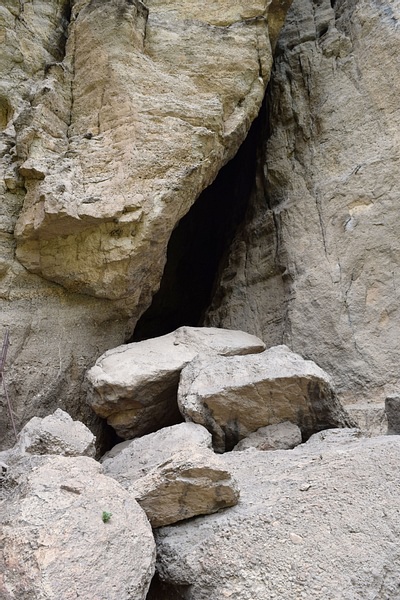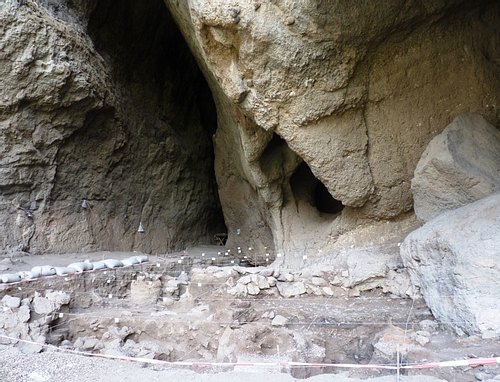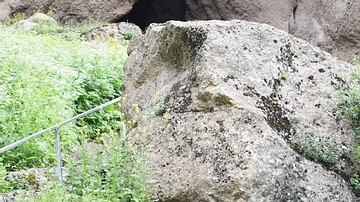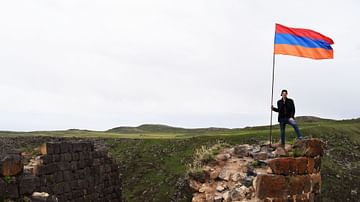
The Areni Cave is a multicomponent cave site with artifacts dating from the Chalcolithic to the Bronze Age. In Armenia, the Areni Cave complex is also known as "Birds' Cave" ("Trchuneri" in Armenian). Located near the town of Areni, which lies close to the Arpa River and the Gnishik River in Armenia's central Vayots Dzor Province, the caves are the site at which archaeologists have discovered what is likely the world's oldest winery, and ancient human brain, the remnants of a 5,000-year-old skirt made of straw, and the world's oldest leather shoe. The first discovery of artifacts took place in 1997 CE by Boris Gasparian. Successive excavations have continued since that time, and they will continue into the future. The Areni Cave complex is one of the few caves in the Caucasus that is classified as “karstic” with a thick sediment sequence.
Prehistory of the Areni Caves
Excavations of the Areni Cave lead archaeologists and scientists to believe that the caves were inhabited by people during the Late Chalcolithic period (c. 6000-3000 BCE). Archaeologists refer to these people as the “Kura Araxes archaeological culture,” and they inhabited sites scattered across the Caucasus, in what is present-day Armenia, Georgia, and Azerbaijan, as well as in portions of western Iran and eastern Turkey. Roughly contemporaneous with Pre-Dynastic and Early Dynastic Egypt, artifacts made by the Kura Araxes people have been found as far as Iraq, Syria, and Israel. This suggests that the Kura Araxes culture perhaps had wide-ranging cultural and economic importance; some archaeologists go further and believe that migrations might have occurred with Kura Araxes populations moving to the south and southwest.
Materials recovered from Areni Cave suggest that human activity in the cave occurred over a period of decades or centuries rather than over thousands of years from around the end of the 5th millennium BCE to the beginning of the 4th millennium BCE. Moreover, excavations at Areni Cave indicate the likelihood that there was a division of labor amongst the prehistoric Kura Araxes people and that this is reflected in how the cave was utilized. Scientists and archaeologists contend that the cave was divided into spaces for specific purposes: places of habitation; places of economic and material production; and places designated for ritual and burial rites. Archaeologists have uncovered seeds, walnuts, the remains of charcoal, a bone awl, and obsidian blade, countless ceramic remnants, bones of sheep, goats, and pigs, and several human teeth. The prehistoric Kura Araxes people seem to have used pits with large ceramic pots or vessels for garbage disposal in the rear of the cave. (Curiously, the bones of several children and babies have been found in these trash areas. It is unknown if they were considered “rubbish.”) Plant materials were also placed in ceramic vessels, but it remains uncertain whether they were used for ritual purposes or if they were refuse. Evidence of the scattered bones of animals with butchered marks suggests that Kura Araxes people consumed the meat of goats and sheep.
Special Artifacts Recovered from Areni Cave
From 2007-2011 CE, archaeologists have unearthed what they believe is a 6,100-year-old winery in the Areni Cave. The following objects have been uncovered: basins that ancient people utilized for wine presses; storage vessels; bowls for the consumption of wine; several wine-making tools; fermentation vats; and the remnants of domesticated grape vines. This makes the Areni cave complex one of the oldest sites in the world containing some of the earliest evidence for an established viticulture. The dry conditions in the cave were well-suited for the production of wine. Radiocarbon testing on several pottery shards was dated to c. 4100-4000 BCE. Archaeologists and scientists believe that the ancient peoples who inhabited the Areni Cave might have used wine in some sort of ritual or mortuary practice. Excavations have shown that as many as 20 human burials are located beside the winemaking zone within the cave, and archaeologists have additionally found various drinking cups around the graves.
Archaeologists discovered a 5,500-year-old leather shoe made of cowhide at the Areni Cave in 2010 CE. Dating from 3500 BCE, it is believed that the cold temperatures within the cave, in addition to sheep dung, kept the shoe in a remarkable state of preservation. (Curiously, the shoe was found stuffed with grass as well.) The shoe was likely tailor-made from a single strip of leather cut in half and later tanned separately. The leather shoe surprised archaeologists by its "modern" appearance. While not the oldest shoe in the world, it is the world's oldest leather shoe. Archaeologists and various scholars believe that the shoe was removed by ancient inhabitants of the cave during a ritual ceremony, which perhaps included wine. In 2010 CE, archaeologists discovered a straw-woven skirt dating to 3900 BCE, and in 2008 CE, they uncovered biological materials consistent with that of a human brain. This portion of human measured 10 cm (4 in) and was so well preserved that it retained visible signs of blood vessels.
This article was made possible with generous support from the National Association for Armenian Studies and Research and the Knights of Vartan Fund for Armenian Studies.









